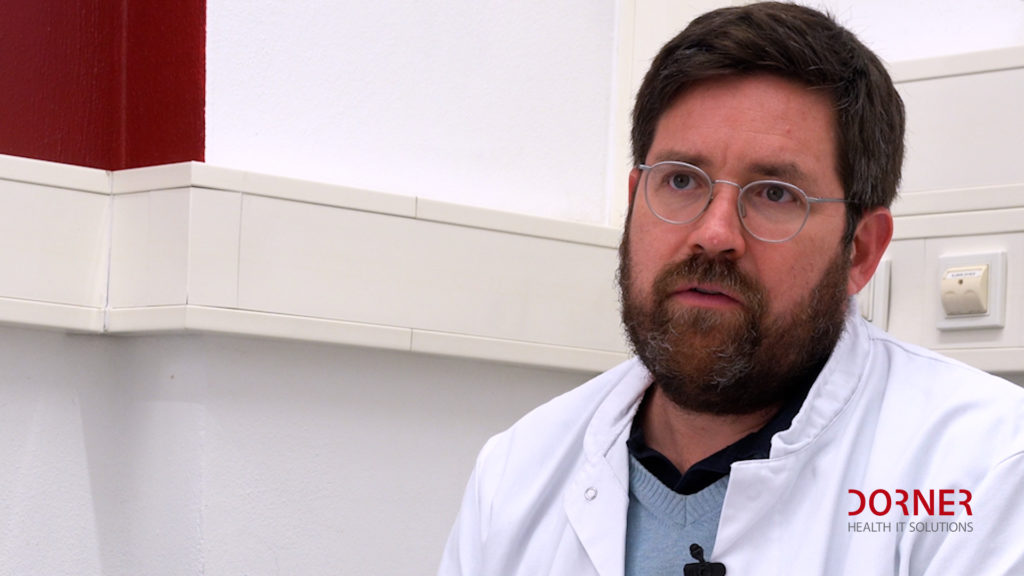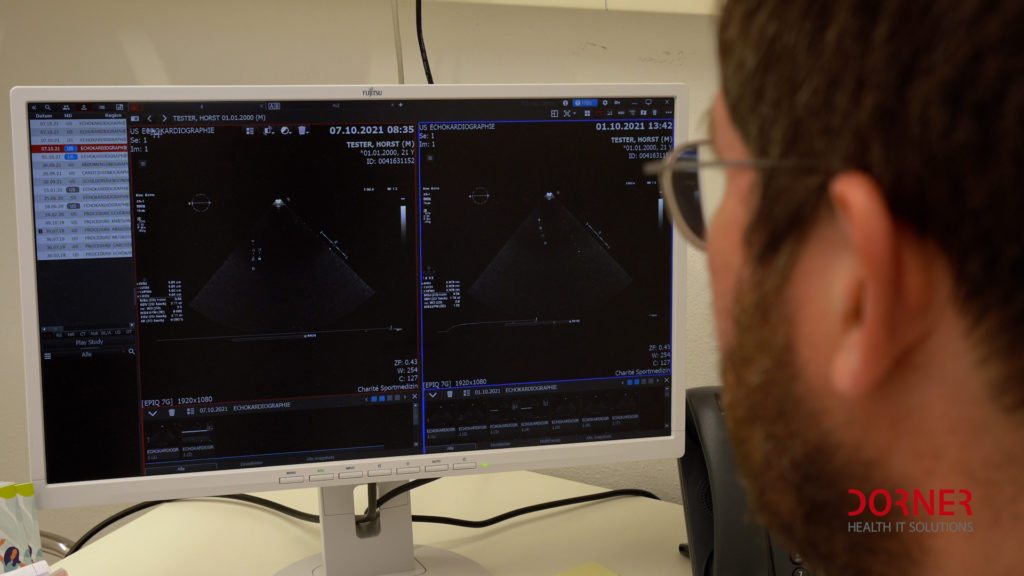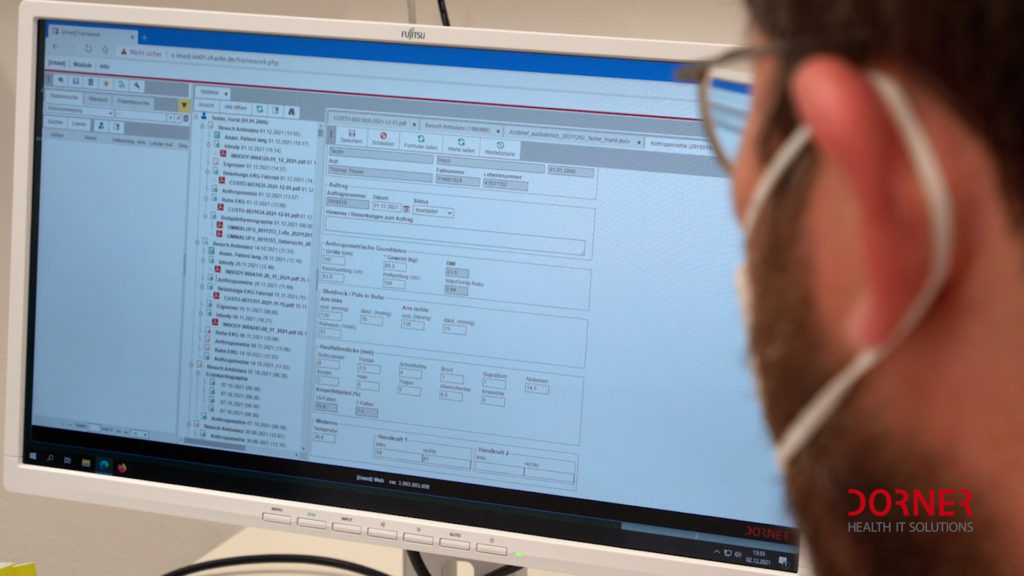The big advantage is actually the clarity. We really have a complete listing of all visits in the past for every single patient. From each visit, you can view all the examinations that have been performed. We can view the whole thing chronologically, but we can also sort it by content, which means it's very intuitively designed and very quick to call up and open.
Dr. Thomas Thouet, Institute of Sports Medicine at the Charité
Our modular i/med Sport is used at the Institute of Sports Science and Sports Medicine at the Charité in Berlin. A standard software solution that is also used or can be used in exercise and occupational medicine, training sciences and similar institutes.
We simply have this hybrid situation in which, on the one hand, the Charité as a whole is dependent on SAP. We have to use that. That's quite clear. At the same time, however, we naturally wanted to have a system in our microcosm, so to speak, that is as flexible as possible for us and where we can connect our entire functional diagnostics. Where we also have our own design options. Both in terms of data input, but also in terms of data output and use of the data. And that's why we have our own "clinic information system" docked onto the SAP system. With this system, we can more or less design our own data management within the department.

Prof. Dr. Bernd Wolfarth, Head of the Institute for Sports Medicine and Sports Science at the Charité, Berlin
An understandable concern, which we were able to realize with our [i/med] Sport: Starting with the extensive anamnesis required for sports medicine. Anyone who visits the sports medicine outpatient clinic at the Charité is given a tablet at the beginning of the examination on which the medical history is already recorded digitally. This data is automatically transferred to the digital patient file. There, they can not only be viewed by medical staff from anywhere, but the system also actively warns of any abnormalities:
For example, abnormalities in the family history. Sudden cardiac death below the age of 50 in the family history is an absolute warning signal and this is then also shown here again in a highlighted form, i.e. you can then also specifically address it again in the conversation and ask what actually happened.

Dr. Thomas Thouet, Institute of Sports Medicine at the Charité
A series of different examinations take place before the interview. Usually starting with anthropometry, in which data such as height, weight, blood pressure, body fat, etc. is collected manually. There is a smart mask for this, which automatically calculates the BMI, for example.
In order to simplify the work as much as possible and at the same time minimize sources of error, the devices at the institute were connected to i/med Sport. The order is sent to the device from the software and the results are also sent there. Optionally as PDF partial findings and/or as structured data. E.g. for the resting ECG. Or for exercise ECG. And also for spirometry. It makes no difference whether the device is connected directly via a bidirectional interface or has its own evaluation software to which the interface is implemented. And this even applies to data that is collected outside the institute.
This is very convenient. In other words, we can start the Merlin Viewer from i/med, which gives us access to all the image data of the person sitting in front of us and we don't have to go back to SAP or any other HIS or PACS. This is really, ultimately a fully integrated system with access to all data: Laboratory data, image data, examination data from the institute and medical history data. That is very helpful.
Dr. Thomas Thouet

Call up and compare ultrasound images directly from [i/med] Sport
In other words, an all-in-all flexible, intuitive and, last but not least, modular system that provides users at the Institute of Sports Medicine at the Charité in Berlin with an end-to-end digitized, paperless workflow. From the eAnamnese, a waiting room overview module, to the individual functional diagnostics with the respective device and software connections, all the way to billing (private billing, collective billing for senders and, last but not least, KBV-certified health insurance billing). And finally, the almost completely automated physician letter writing, which saves an enormous amount of time.
As far as the creation of doctor's letters is concerned: We are faster with this and that is already something that will also be an important quality factor in the future. Because we have all the information digitally, we can easily share it with doctors, hospitals and other healthcare providers. This is important to ensure the best possible care. In the future, we will probably have a common electronic record for all patients, and we are already very well prepared for that.
Prof. Dr. Bernd Wolfarth

Collect all important information in one place and create a doctor's letter from it with one click
And as with all solutions based on our web-based DORNER Workflow Engine framework, you don't even have to be physically at the institute to use the system.
Ultimately, I have the option of logging directly into i/med via VPN from home using my browser, so that I can basically do everything that I would do here at my desk just as easily from home. Or sometimes, and this is really what sports medicine is all about, I might need to check a test result again on a Sunday morning at 8 or 9 a.m. because I might have a competition or match coming up in the afternoon. Of course, it's also very elegant if you open the tunnel view (or VPN access) to the Charité and can view it from home in two mouse clicks.
Dr. Thomas Thouet
Further information about i/med Sport
Learn more about our flexible IT solution for the Institute of Sports Medicine, Sports Science, Exercise and Occupational Medicine, the Training Sciences and at similar institutes .
Contact us today and convince yourself of the modular solution. Whether you are looking for a solution for the entire institute or want to digitize individual process steps (e.g. anamnesis or writing a doctor's letter)!
![Brochure [i/med] Sport](https://dorner.de/wp-content/uploads/2023/02/imed-sportmedizin-724x1024.jpg)